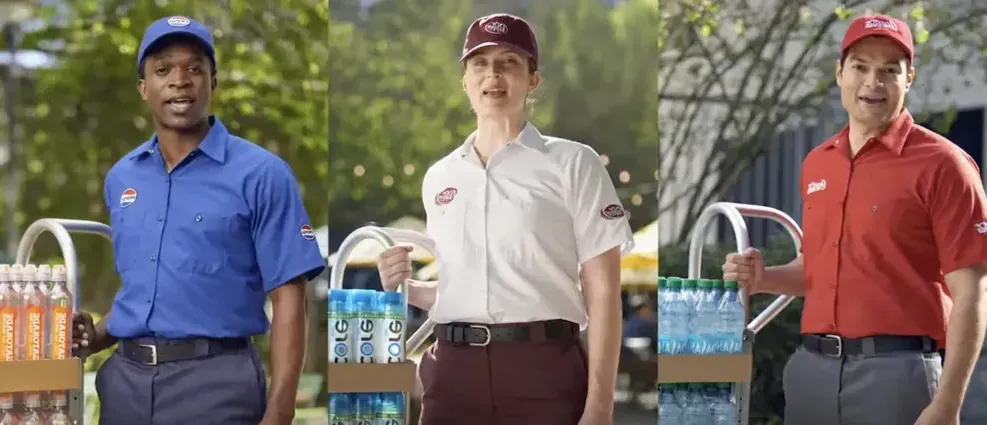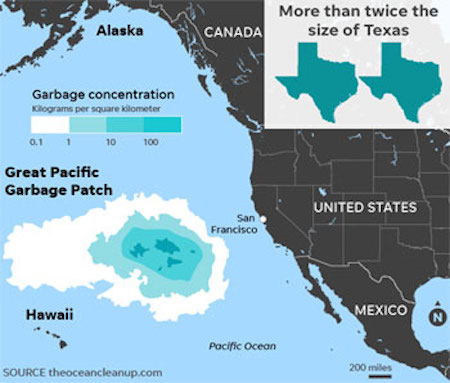
Plastic Pollution Mortality Facts:
It is in Your Veins, Causing Cancer, Heart Attacks, Strokes, and Death

Plastic has been in use for over a century. It was first created in the mid-19th century, with the invention of celluloid in 1869, and it is considered the first actual plastic. The widespread commercial production of plastics began in the early 20th century.
"Despite its deep roots, plasticulture is often overlooked in mainstream discussions of sustainable agriculture (mainly because of its non-visibility in the public eye), but researchers are increasingly discovering the practice poses real threats to the future of food security.
Late last year, the United Nations Food and Agriculture Organization (FAO) issued A Call for Action concerning the long-term impact of plasticulture on terrestrial and aquatic environments and human health. The FAO found that in 2019 alone, 12.5 million tons of plastic products were used in plant and animal production, and another 37.3 million tons in food packaging. Most of those plastics are single-use and replaced annually, if not seasonally. Often possessing little recycling value, millions of tons end up in landfills or are incinerated, releasing microplastics into food, fields, air, and water all along the way." FAO/Sierra Club.
The ten biggest polluters in the plastics industry are:
1. Nestlé
2.PepsiCo
3. Coca-Cola
4. Unilever
5. Mondelez International
6. Mars
7. Procter & Gamble
8. Colgate-Palmolive
9. Perfetti van Melle
10. Philip Morris International
– All according to a report by Break Free from Plastic in 2020.
Plastic is manufactured from synthetic polymers derived from natural resources such as crude oil and natural gas. These raw materials are processed through various chemical reactions to produce plastic. Plastic pollution is particularly severe in Southeast Asia, with the worst affected countries like Indonesia, Thailand, and the Philippines.
The Great Pacific Garbage Patch between Hawaii and California is one of the most significant accumulation zones for ocean plastic pollution. Developing countries with insufficient waste management experience vast plastic pollution. Indonesia, the Philippines, Vietnam, and Thailand are top contributors to ocean plastic pollution. China produces the most plastic waste of all nations; 1/3 of all plastic is Chinese.
Microplastics are ubiquitous in the environment, including the air we breathe, the water we drink, and the food we eat. Microplastics can be found everywhere, from remote wildernesss to bustling urban towns.
Nanoplastics linked to heart attack, stroke and early death, study finds. People with microplastics or nanoplastics in their carotid artery tissues were twice as likely to have a heart attack, stroke, or die from any cause over the next three years than people who had none, a new study found. People with microplastics or nanoplastics in their carotid artery tissues were twice as likely to have a heart attack, stroke, or die from any cause over the next three years than people who had none, a new study found. Carotid arteries, which lie on each side of the neck and carry blood to the brain, can become clogged with fatty cholesterol plaques like the arteries leading into the heart, a process known as atherosclerosis. "To date, our study is the first to associate plastic contamination with human diseases," said Raffaele Marfella, lead author of the study published Wednesday in the New England Journal of Medicine.
Polystyrene Nanoplastics can cross the blood-brain barrier in Lab Mice. In simple terms, tiny bits of plastic called polystyrene can go through a protective barrier in our bodies and cause a reaction in a type of cell called microglia in the brains of mice (humans). Microglia are like the clean-up crew of our brain; they help get rid of harmful things. But when they are activated too much, it can cause problems and harm the brain. So, too much microglia activation can damage the brain's health.
Nanoplastics, widely present in the environment, air, food, water, and organisms, have been proven to cross the blood-brain barrier, increasing the incidence of neurodegenerative diseases like Alzheimer's disease (A.D.). Nanoplastics are neurotoxins. Ironically, those who constantly drink out of plastic bottles are drinking neurotoxins that increase the likelihood of premature senility, A.D.
Nestlé, PepsiCo, Coca-Cola, Unilever, Mondelez International, Mars, Procter & Gamble, Colgate-Palmolive, Perfetti van Melle, Philip Morris International – Why do they flood the planet with synthetic neurotoxin, ever-present nanoplastic? Is it to make our lives better via 10,000-year plastic? Is it so we feel richly rewarded with plastic wrappers, bottles, and cartons that make us feel like Kings and Queens? Or are they just stupid and greedy?
Styrene's health effects include skin, eyes, and upper respiratory tract irritation. Acute exposure may also result in gastrointestinal effects. The Department of Health and Human Services (DHHS), National Toxicology Program (NTP), listed styrene as "reasonably anticipated to be a human carcinogen" in the Report on Carcinogens, Twelfth Edition, released on June 10, 2011.
"A steep rise in global plastic production and significant discharge of plastic waste are expected shortly. Plastics pose a threat to the ecosystem and human health through the generation of particulate plastics that act as carriers for other emerging contaminants and the release of toxic chemical additives. Since plastic additives are not covalently bound, they can freely leach into the environment. Due to their occurrence in various environmental settings, the additives exert significant ecotoxicity. However, only 25% of plastic additives have been characterized for their potential ecological concern."

"Phthalates are a series of widely used chemicals that have been demonstrated to be endocrine disruptors and are detrimental to human health. Phthalates can be found in most products that have contact with plastics during production, packaging, or delivery. Despite the short half-lives in tissues, chronic exposure to phthalates will adversely influence the endocrine system and functioning of multiple organs, which has negative long-term impacts on the success of pregnancy, child growth and development, and reproductive systems in both young children and adolescents. Several countries have established restrictions and regulations on some phthalates; however, more countries should establish constraints or substitute measures for phthalates to reduce health risks.
Author Rick Woychik interviewed Kjersti Aagaard, M.D., Ph.d Here is a synopsis of the article on Nanoplastics:
· Microplastics and nanoplastics (MNPs) have been found in every placenta sampled from normal-term pregnancies, with varying amounts and types found in each individual.
· Higher levels of MNPs in placentas have been associated with slightly lower Apgar scores in babies and a need for medical augmentation during labor.
· Whether MNP exposure causally impacts health outcomes is still unclear, and more research is needed with larger cohorts and varying outcomes.
· A recent study found patients with MNPs in artery plaque had a significantly higher risk of heart attacks, strokes, or death compared to those without MNPs.
· MNPs have been found crossing barriers like the blood-testicle barrier, where they were not expected to reach.
· Future studies aim to determine if MNPs are associated with medical disorders of pregnancy like preeclampsia and diabetes.
· Research is exploring a potential relationship between MNP presence and preterm birth.
· MNPs have been detected in varying amounts and types in every individual sampled.
· More data is needed to determine if MNPs represent a significant health hazard like pesticides or a detection issue.
· Congregated particles like MNPs or arterial plaques can block vessels and disrupt blood flow, potentially causing heart damage.
Plastic pollution is expected to worsen significantly. With increasing global plastic production and inadequate recycling, plastic waste entering the environment is projected to rise dramatically, leading to more significant health risks for humans.
Starting with an estimate that 150 million tonnes of plastic are already polluting the world's oceans and that "leakage" adds at least 9.1 million tonnes more each year—a figure that is said to be growing by five percent annually—the MacArthur report calculates there will be 850-950 million tonnes of ocean plastic by 2050, versus total fish stocks of 812-899 million tonnes.
Great Ocean Plastic Gyres and Their Characteristics
The Earth’s ocean currents form large rotating systems called gyres. Four major ocean plastic gyres have been identified: the North Atlantic Gyre, the South Atlantic Gyre, the North Pacific Gyre, and the South Pacific Gyre. These gyres are significant as they accumulate a substantial amount of plastic waste. Below is a chart with four columns detailing each gyre’s name, location, size in square miles compared to landmarks, and estimated size in 2050.
|
Name of Gyre |
Location |
Size in square miles-comparison to |
Estimated Size in 2050 (square miles) |
|
North Atlantic |
Between the US East Coast and Europe |
Approximately twice the size of Texas or 16 million square miles |
41 million square miles |
|
South Atlantic |
Between Africa and Brazil |
Approximately equal to the size of Mexico or 13 million square miles |
27 million square miles |
|
North Pacific |
Between Japan and California |
Approximately twice the size of Texas or 16 million square miles |
48 million square miles |
|
South Pacific |
Near Easter Island |
Approximately equal to the size of Mexico or 13 million square miles |
44 million square miles |
According to a study published in Science Advances in March 2018, researchers estimated that by 2050, plastic waste could outnumber fish pound for pound in these gyres if no action is taken (Eriksen et al., 2018). The chart above provides an overview of these ocean plastic gyres’ current sizes and their projected growth by mid-century. Bottled water contains more than just water. It also contains a surprising number of microscopic pieces of plastic.
That’s according to recent research, which finds that the average liter of bottled water contains nearly 240,000 tiny pieces of plastic. Nearly 90% of the plastics detected in the study were nanoplastics — plastic particles that can’t be seen with the naked eye and small enough to enter the body’s cells and tissues.
Microplastics — pieces of plastic debris that result from the breakdown of plastic products over time — and even smaller nanoplastics are everywhere and could pose a risk to human health.
Pirg.org/NIH.gov
Top 27 Single-Use Plastic Polluters Globally (in order):
Tracy Turner was born into two extended families of bookworms - one horticultural and one petroleum industry. Semi-retired from IT, Corporate Analyst and Botanical Garden Plant Propagation. Among his many interests are all sciences, news, tracking political corruption, national and world events (corruption). Urges you to ask several USA IT professionals about web censorship; which is becoming rampant. Twitter, Facebook and Myspace are not free speech - they are places of monitoring, censoring and personal data harvesting. Also, just because you see your words in print online, it does not equate to "free speech". Do you believe Google and Bing blacklist Michael Taylor's online words as often as said censors blacklist your online "free speech"? If you love freedom, become active in corruption watch, exposure; free speech and freedom of the press activism.
Sources:
Impact of nano plastics on Alzheimer's disease
https://www.sciencedirect.com/science/article/pii/S0301479723021527
https://www.ncbi.nlm.nih.gov/pmc/articles/PMC8157593/
Microplastics' knowns, unknowns discussed by a physician ...
https://factor.niehs.nih.gov/2024/5/feature/4-feature-microplastics-and-nanoplastics